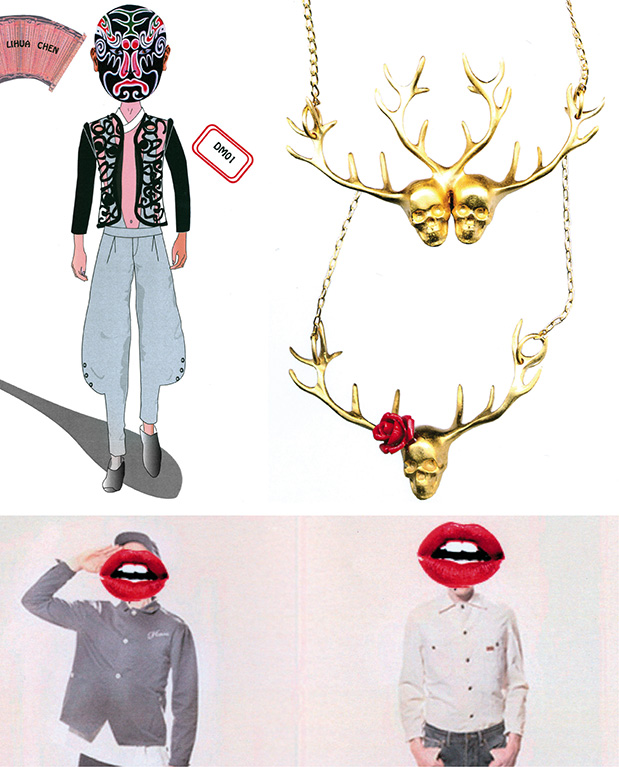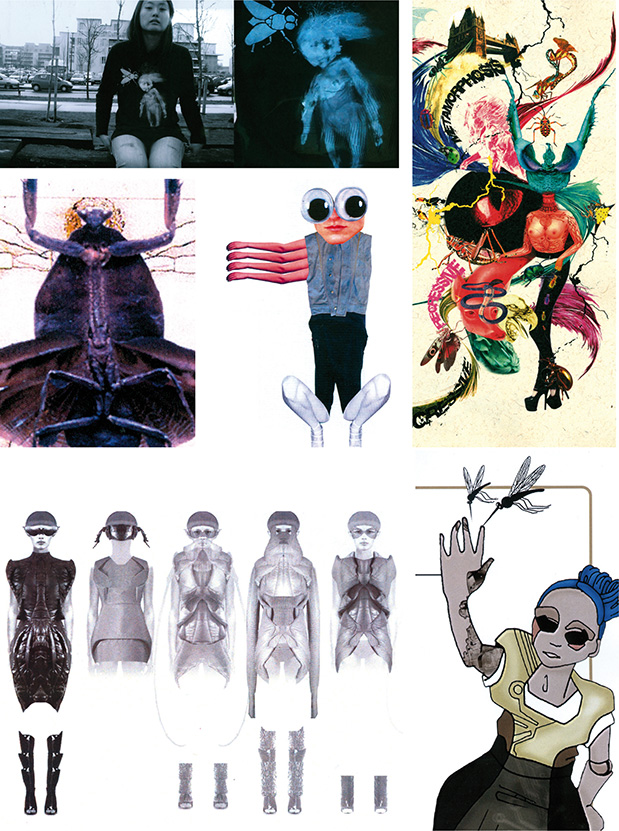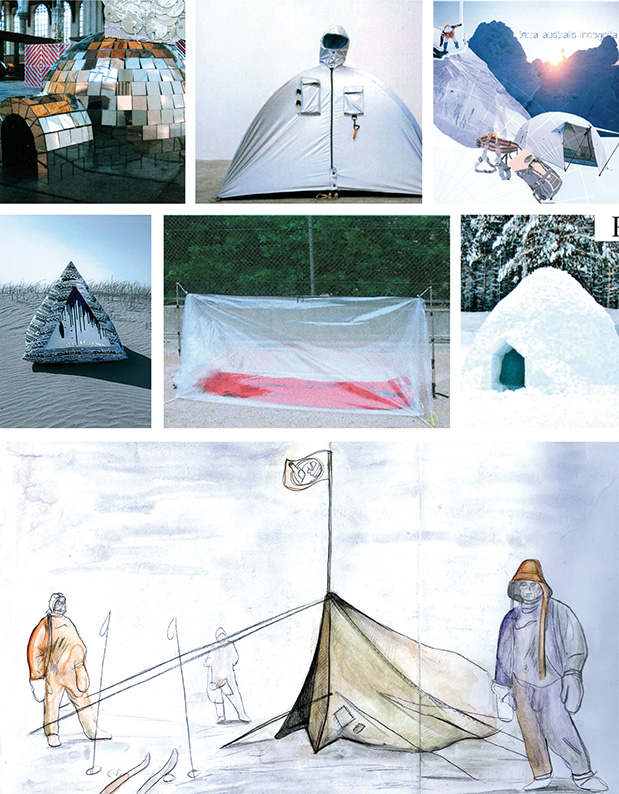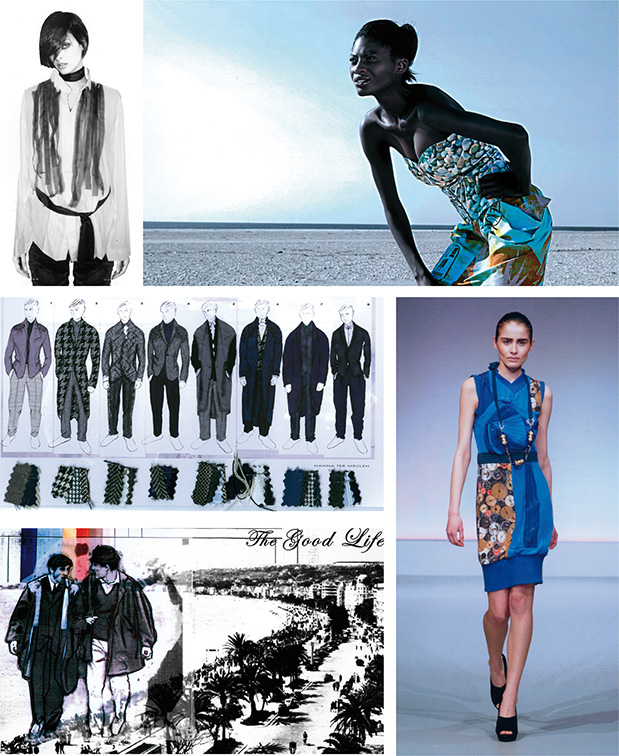
Renowned with Trieste’s postman for being the worst time of the year following Christmas are the ITS preselections. Lugging armfuls of portfolios at a time up 4 flights of stairs is indeed an arduous task. Despite the friendly complaints, hundreds of portfolios arrive safely at our office ready to be opened and viewed. A tough job but very rewarding as the more you delve :the more can be understood about the creative minds. It is to all effects a privileged viewpoint of what is going on in the young fashion, accessories and photography community.
Last year was marked by the increase of menswear collections, at the detriment of a “saturation” in womenswear design. After viewing the ITS#NINE portfolios arrived for fashion and accessories competitions, we can confirm a strong interest of young designers in developing menswear projects. A new attitude is introduced with regards to womenswear, intended as a space to unleash creativity whereas menswear follows cleaner and softer lines.
We were pleased to find outfits that once again are made to dress and wrap the body. It is a return to a more traditional view of clothes, where the body is the key structure that carries the outfit, free of any unnatural or forced position and gesture.
The classical concept of elegance has also been put aside, but only to leave space for a new aesthetic that could be identified as a “refined sartorial street”. It is completely void of craziness and volumes, somewhat strict and sister to a chromatically moderate elegance never without the necessary comfort to face a frequently quoted battlefield: the street.
It is a new uniform for the social actors, who roll up their sleeves and restart from black to reconstruct the shininess of wealth. Reason is found in a type of neoclassical elegance, directly derived from all the “musts” that marked the collective imagination in the past 30 years. It also puts into evidence a strong and necessary connection of the designer with the present, it reminds us of philosopher and sociologist John Carl Flugel when he announced/declared the “great male abandon” of the sumptuous dress and colour, to wear the “worker’s uniform” in the newly born industrial era.
Having said this – even though there are always exceptions and it is exceptions that we look for – it appears quite clearly that the excesses of the eighties are gradually fading away. These young designers are creating collections that express their will to be understood by the market. Putting aside their desire of self expression in order to demonstrate a greater understanding of the needs of those who will wear their outfits.
The many concepts underlying the projects is evidence of the vast amount of research behind the collections.
Birds
What stands out most in the portfolios is the presence of birds of all sorts (sometimes just stylized), from the nightingale to the crow. They are used as a part of the outfit or accessory, decorative or structural element, embroidered or three-dimensional and also as a reference in mood boards, in colour palettes, in artistic sketches and in photos of the outfits.

In a period of global negativity such is the one we are currently living, birds appear to be the symbol of our desire to “spread wings” and fly away and also become message bearers (as were birds in the past).

Insects
The most numerous among the species, insects appear very often also in the mood boards, as does the animal kingdom at large.

Muscles & Bones

The body is naked and turned inside-out to show the muscles and bones that we then find as elements inside the collections. It might be the first step towards a man that is conscious of its ability to survive without the need to exploit the skin of other living creatures for its own wealth.

Scars

Wounds, scars and sutures are the logical physical consequences. They present themselves also on a visual and conceptual level as metaphors of the need to mend pieces/fragments… Experience is based on failure and understanding one’s way, evolving from chrysalis to butterfly, is not an easy task.

Double Heads & Masks
Two heads can help provide a clearer view, and we have found several different representations: As metaphor of the need to face one’s own conscience (remember the discussions between the wise talking cricket and the naive Pinocchio in Collodi’s celebrated tale?), or as a bond between past and future quoting the virtues of the Roman Olympus deity Giano.

Together with four-eyed sketches we also registered the frequent use of the mask, deprived of any connection with eroticism and mimicry. It is to be seen as part of the above double head symbolism and represents a semiotic way of “hiding to reveal” or, quoting Oscar Wilde: “Man is least himself when he talks in his own person. Give him a mask, and he will tell you the truth”.

Tents & New Nomads
The tent is a comeback in the “new nomads” trend, sadly representing the only/temporary shelter of many today, a consequence of the tragedies that hit the planet recently. It isn’t that hard to be homeless in the “Grand Hotel Global Village”.

Geometry & Symmetry
In the images of the mood boards as well as in the pictures of the outfits we often found the use of geometry and symmetry. A game of Futurist mirrors and kaleidoscopes worthy of painter and sculptor Umberto Boccioni.

Materials & Techniques. Weaving.
Overall prints and knitwear had increased in the recent past but they now give way (together with the neglected denim) to the weaving technique declined in several different ways. Like the Celtic symbol of the round dogs (three dogs eating each other’s tail), weaved fabric can symbolize both a bond as well as the infinite since it has neither head nor tail. We also cannot exclude a reference to the tradition of Bottega Veneta even though it is strange on such a large scale.

Colours
The colours are those of an autumn garden: a melody of grey and charcoal, with yellow and blue accents and few solos of red, closing with a hint of white. Very little space is left for strong contrasts in favour of shades of grey. Baffling the “little black dress” clich´, we found one-colour outfits in the womenswear collections. An involuntary quoting of the artistic Suprematism of painter Kasimir Malevich, parallel to what the artistic vanguards of the beginning of the 20th century were, when a reduction of shape also meant a reduction in colour.

Clean Shape
Both womenswear and menswear show more intelligent solutions replacing the exaggeration of volumes. The span of research here goes from the formality of the twenties to the complicated haute-couture of the French school. As a result even these silhouettes are globally more linear, though sometimes including volumes in the shoulders and in the hips.

What really surprised us is that fairytales and travel stories are almost completely absent. With a general trend that tends to prefer less personal or self-referential concepts, quoting fairytales is not a way to dive in the imaginary of certainty to create the basis for a model. It looks more like an unreal descriptive element to understand the mood of the project.
Looking at the young talents’ favourite designers and favourite magazines, things have changed since 2009. Alexander McQueen is strongly on top of the list and there probably is no reason to explain why. Behind him are Hussein Chalayan, Maison Martin Margiela, Comme des Garcons and Viktor and Rolf.
Regarding magazines there has been quite a revolution: Vogue (total of various editions) leads the pack, followed by Collezioni editions, Elle editions, Nylon editions and Dazed & Confused followed by i-D.
Needless to say, the emotion of walking with our fingertips on the threads of magnificent yet invisible mental webs connecting the most unthinkable points of the planet is always intense.
They are fragile silk threads that vibrate from human feelings, along which run – sometimes crossing each other – the silent plots of stories we all hear.
This is the marvel which repeats itself each year: you turn a page and hear your name being called.